Bach Cong Tu Mansion
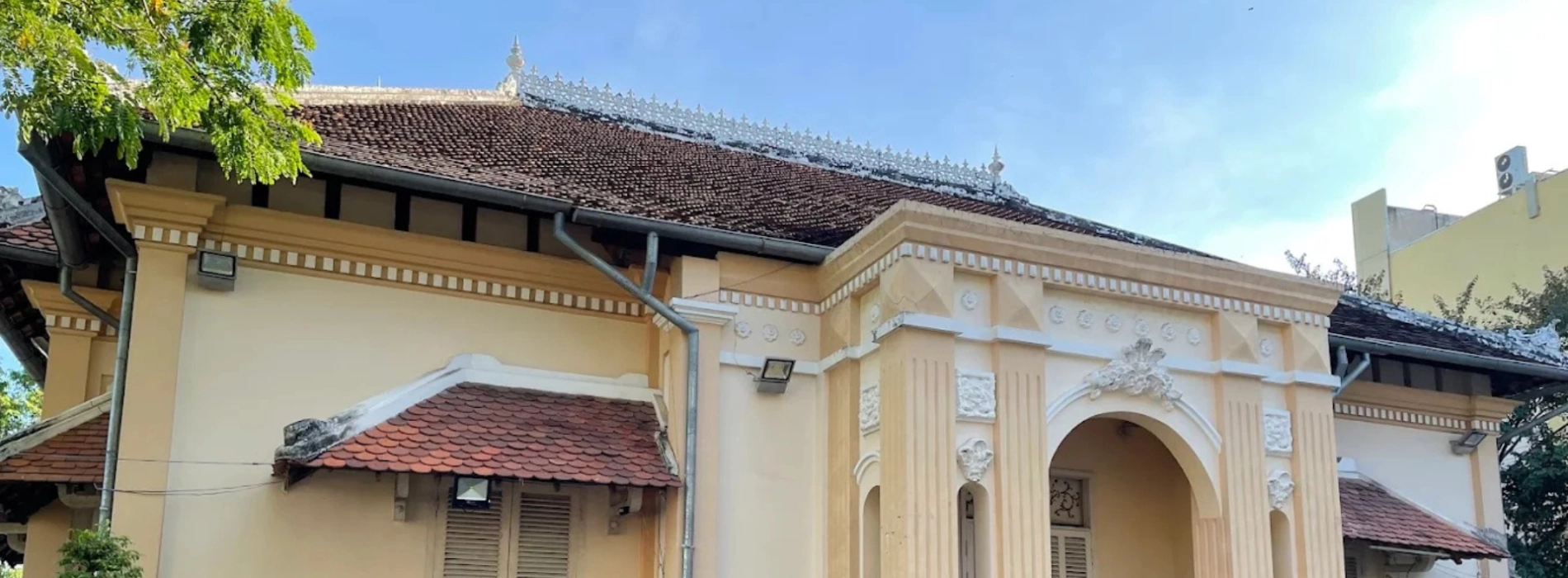
Bach Cong Tu Mansion (The White Young Master’s Mansion) is a historic site that would give you a glimpse into the life of one of Southern Vietnam’s most well-known figures from the early 1900s. Visiting this place is a great way to learn more about local history during your Mekong Delta travel.
Bach Cong Tu Mansion is located at No. 62 Dinh Bo Linh Street of Ward 3 in My Tho City, Tien Giang Province. Assuming the starting point is Ho Chi Minh City, you can take a bus from the Western Bus Station (Ben Xe Mien Tay) to My Tho City, with ticket prices ranging from 2.68 USD to 3.82 USD per trip. For your information, this journey should take about 1.5 to 2 hours.
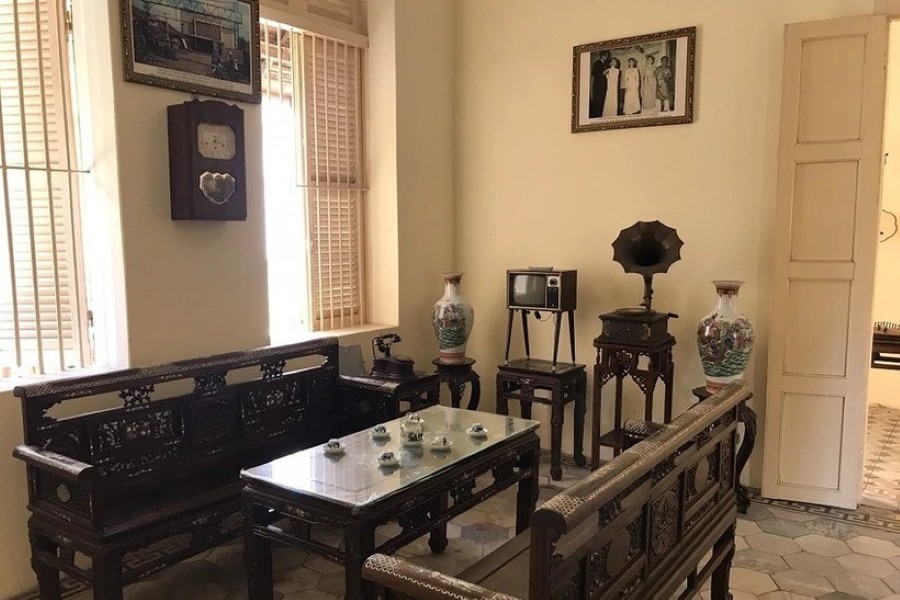
The interior of Bach Cong Tu Mansion
If you're traveling by private vehicle, head southwest on National Highway 1A from Ho Chi Minh City, cross the Rach Mieu Bridge, and you'll arrive in My Tho City. From the city center, Bach Cong Tu Mansion is about 4.3 kilometers away, roughly a 5 to 10-minute drive.
Admission to the Bach Cong Tu Mansion is approximately 1.15 USD for adults and 0.38 USD for children. Outside of opening hours, they still allow visitors to enter the courtyard, but access to the interior of the house would no longer be available.
Since My Tho City is located within the Mekong Delta, the best time to drop by Bach Cong Tu Mansion is during the dry season, from December to April, when it is sunny and dry, which is perfect for sightseeing and outdoor activities.
The flood season, from September to November, is also a great time to visit, with flooded rice fields and lively river life, especially if you're combining your trip with other Mekong Delta tours.
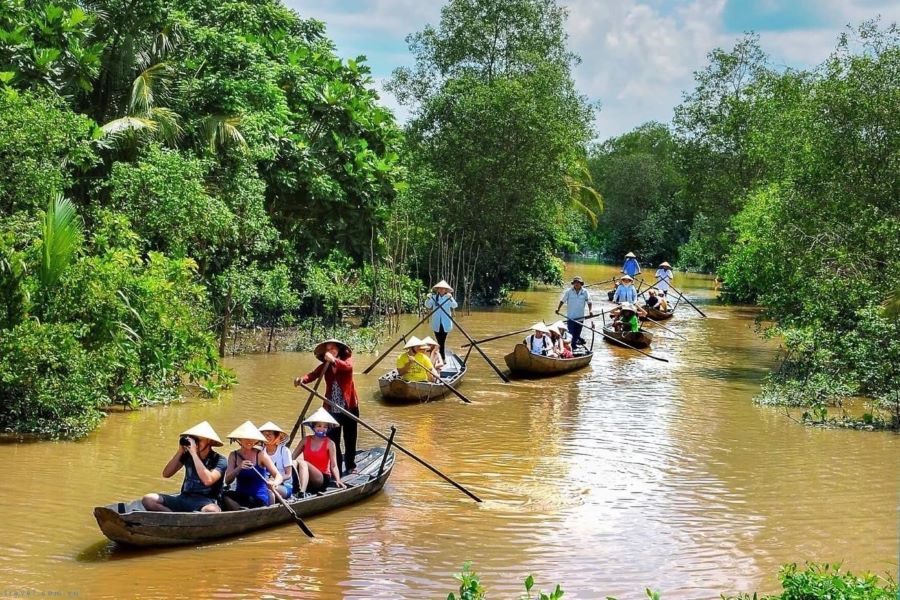
The flood season is a good time to visit the Mekong Delta
Opening hours of Bach Cong Tu Mansion: 8:00 AM – 11:30 AM and 1:30 PM – 4:30 PM daily.
Bach Cong Tu Mansion features a distinctive mix of classic European design and the traditional aesthetics of Southern Vietnam. As the owner, Bach Cong Tu, was passionate about French architecture, the house features a graceful design heavily inspired by French villas.
In addition to that, local touches throughout the home reflect how Southern Vietnamese culture absorbed and reinterpreted foreign influences in its own way. This is a fascinating way to learn about Vietnamese history from the 1900s during your Mekong Delta travel.
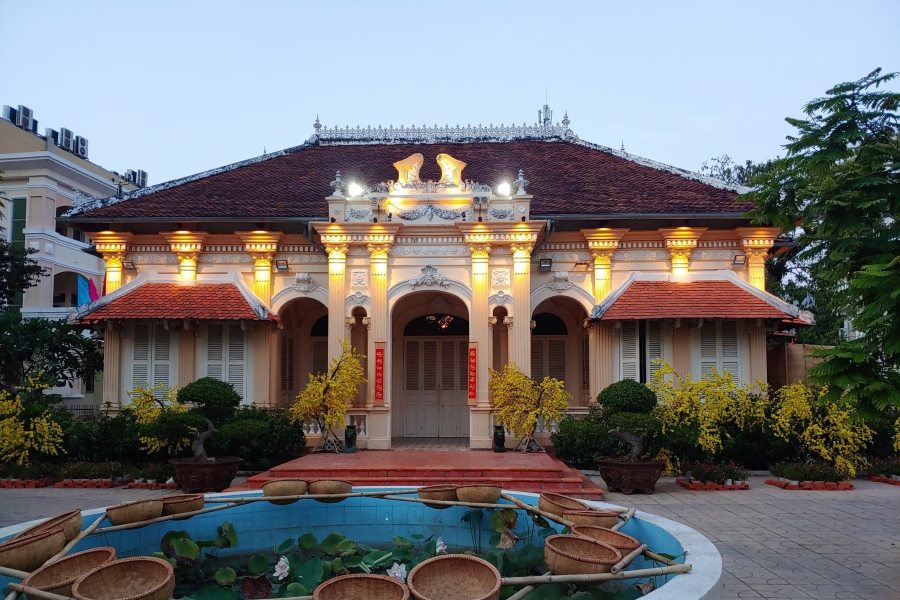
The mansion features influences from French and Vietnamese architecture
Though nearly a century old, Bach Cong Tu Mansion still holds onto its original charm. Even the smallest details have been preserved, like the framed photo of the legendary Huynh Ky cai luong troupe from 1926, offering a glimpse into the golden age of Southern Vietnamese theater.
Le Cong Phuoc (1895-1950), famously known as Bach Cong Tu, or “The White Young Master”, was born in the village of Dieu Hoa, in what is now My Tho City, Tien Giang Province. He was the fourth son of Le Cong Sung, a wealthy and influential official in the region.
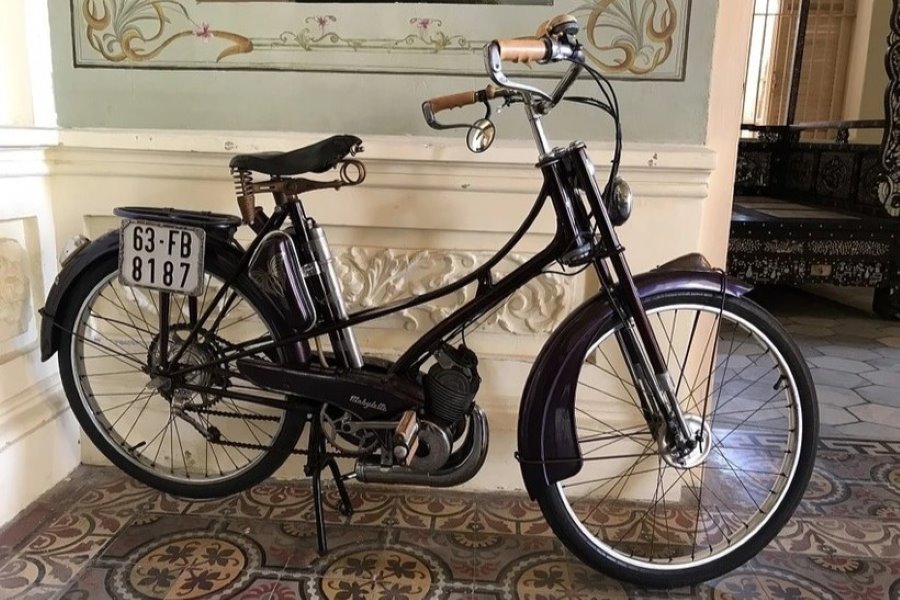
The old bicycle of Bach Cong Tu, preserved as an artifact
In 1909, Phuoc traveled to France for his studies and took the name George Phuoc. He quickly embraced Western culture and style, and upon returning home, he built a luxurious mansion inspired by French aristocratic architecture, a reflection of his taste and status.
Known for his extravagant lifestyle, Bach Cong Tu earned his nickname to contrast with his equally flamboyant contemporary, Tran Trinh Huy, who was dubbed “The Black Young Master.”
Suggested for you: Mekong Delta Tour 2 days: Cultural exploration of the Mekong Delta
Beyond the lavish reputation, he was also a passionate supporter of the arts. He co-founded the Phuoc Cương cai luong troupe with Nguyen Ngoc Cuong, then later started his own, the Huynh Ky troupe, featuring some of the most famous performers of the era.
He even built a dedicated theater and purchased motorized boats to bring cai luong to towns all across Southern Vietnam. Unfortunately, due to the 1930s economic crisis, Huynh Ky troupe eventually disbanded, and after a failed revival attempt, Phuoc went bankrupt.
Following his financial failure, he unfortunately had a divorce and fell into addiction. In his final years, he lived in poverty, wandering the streets and refusing help from others. In early 1950, he was cared for by a family friend in his last days and eventually passed away.
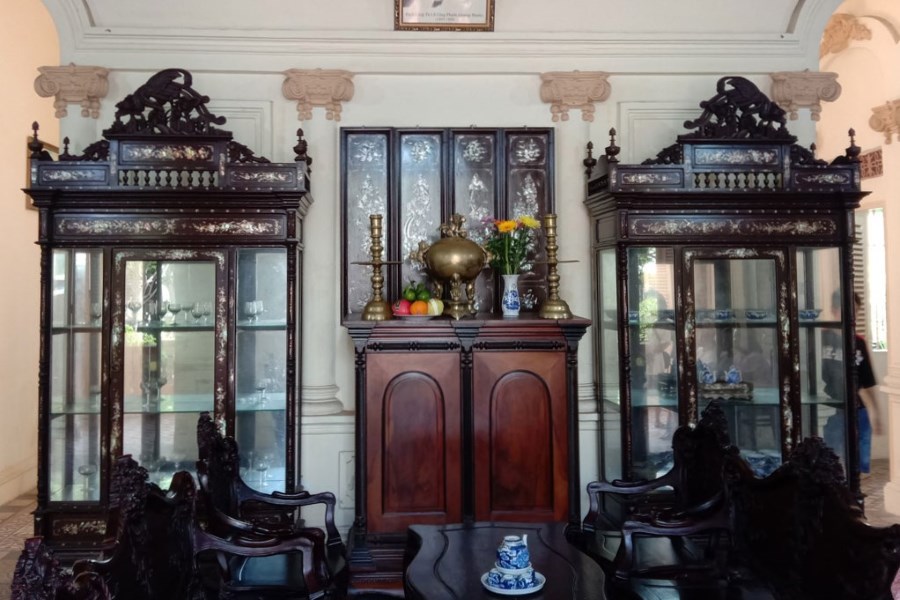
The site preserves much of the original layout
Bach Cong Tu is revered by local communities in Southern Vietnam despite his tragic demise. He is remembered not just for his wealth and flamboyance, but for his enduring contributions to the growth of cai luong theater, which helped bring this art form to life throughout the Mekong Delta.
Adapted to local tastes from a Chinese noodle soup, hu tieu My Tho features chewy rice noodles in a light and sweet pork bone broth, topped with a variety of custom ingredients like sliced pork, pork liver, shrimp, and quail eggs. This tasty dish is then typically served with a rich dipping fish sauce for added flavor.
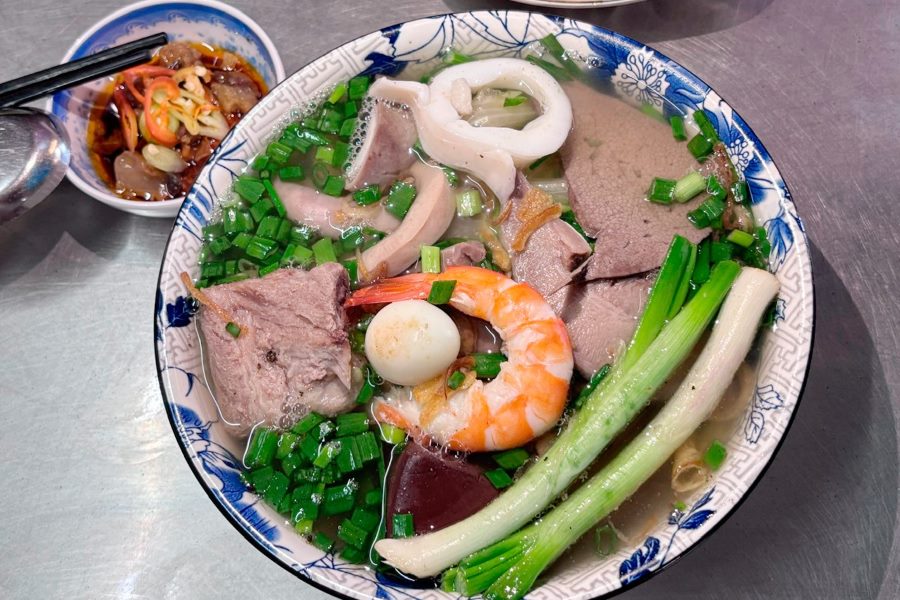
Hu tieu My Tho is a hearty broth-based dish
Originating from deconstructed spring roll, this dish has rice noodles, shrimp, boiled pork, fresh herbs, and vegetables all served in one bowl.
The dish is named after the local way of saying “và” (to mix or scoop), reflecting how it’s eaten. The star ingredient of bun goi da is the broth, with its mild tamarind sourness, pork bones' rich flavour, and fragrant with fermented soybean paste.
A Southern Vietnamese specialty, this dish has a strong, filling flavor and is frequently garnished with shredded coconut, roasted peanuts, and occasionally duck eggs.
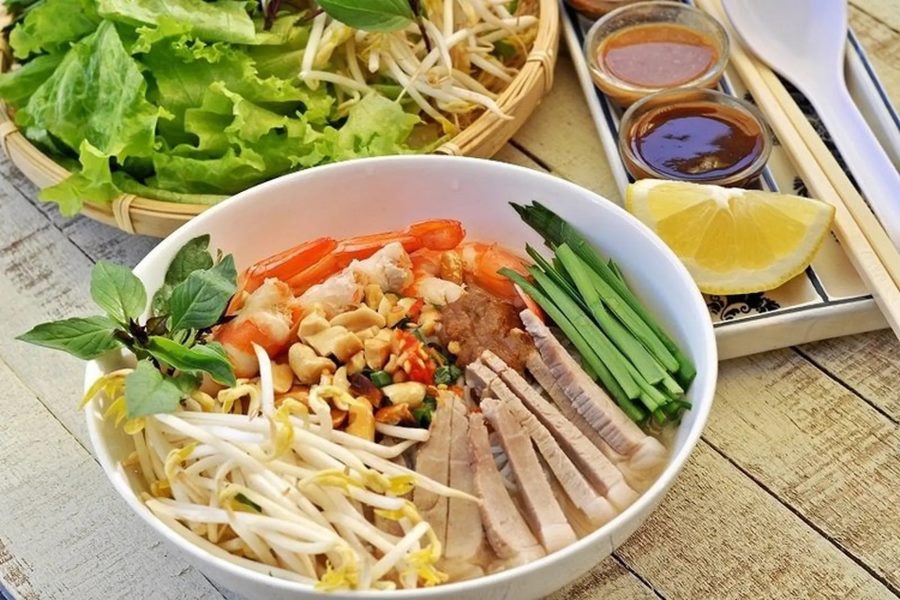
Originating from spring rolls, this dish has evolved to become its own specialty
This rustic rice porridge from Tien Giang combines tender snakehead fish (ca loc) with roasted rice and the bitter bite of wild herbs (rau dang). Made with carefully chosen local ingredients, the broth is flavorful but light.
It's a simple, nourishing dish that embodies the essence of Southern Vietnam and is frequently served with fish sauce and fresh herbs on the side.
Bach Cong Tu Mansion is a fascinating destination that is well worth your time if you want to venture off the usual Mekong Delta tours. So why not include this hidden gem in your itinerary and allow Asia King Travel to show you around one of the most quaint and obscure sites in the nation?
Suggested for you: Southern Vietnam Cycling Tour 5 days: Saigon & Mekong Delta